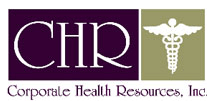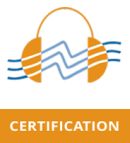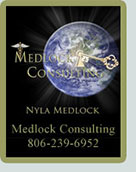CHR Newsletter – January 14, 2016
CHR Newsletter – December 31, 2015
CHR Newsletter – December 17, 2015
CHR Newsletter – December 3, 2015
CHR Newsletter – November 19, 2015
CHR Newsletter – November 5, 2015
CHR Newsletter – October 22, 2015
CHR Newsletter – October 8, 2015
View this email in your web browser.
|
CHR Newsletter – August 13, 2015
View this email in your web browser.
|
CHR Newsletter – July 30, 2015
View this email in your web browser.
|




 White Glove Service is Our Standard of Care
White Glove Service is Our Standard of Care






 Occupational Health Connections, Inc. (OHC) is a distinguished leader in occupational and employee health staffing and recruitment. For job opportunities, please visit:
Occupational Health Connections, Inc. (OHC) is a distinguished leader in occupational and employee health staffing and recruitment. For job opportunities, please visit: 


 According to a new University of Iowa study, employees with sit-stand desks stood 60 minutes more a day at work compared to their co-workers with sitting desks, and they continued to do so long after their newfangled desks lost their novelty. Plus, the sit-stand desk users walked an additional six minutes a day at work.
According to a new University of Iowa study, employees with sit-stand desks stood 60 minutes more a day at work compared to their co-workers with sitting desks, and they continued to do so long after their newfangled desks lost their novelty. Plus, the sit-stand desk users walked an additional six minutes a day at work.
 With computers and mobile devices the norm in today’s workplace, computer-related stress is a risk for employers keen to keep productivity levels up and sickness absence down. But technology can also provide an answer to some of these problems.
With computers and mobile devices the norm in today’s workplace, computer-related stress is a risk for employers keen to keep productivity levels up and sickness absence down. But technology can also provide an answer to some of these problems. A good night’s sleep is a fundamental part of our health and wellbeing, and means we are more alert and productive during the day. So why do so many of us find it hard to achieve? This article shares expert advice on how to help employees improve their sleep routine.
A good night’s sleep is a fundamental part of our health and wellbeing, and means we are more alert and productive during the day. So why do so many of us find it hard to achieve? This article shares expert advice on how to help employees improve their sleep routine. European countries need to do more to address workplace mental health, a study finds in this month’s round-up of recent occupational health research. Other studies look at cognitive behavioral therapy and work participation and chronic disease among older workers.
European countries need to do more to address workplace mental health, a study finds in this month’s round-up of recent occupational health research. Other studies look at cognitive behavioral therapy and work participation and chronic disease among older workers.




 A new study from the University of Iowa finds that inspiring office employees to be active at work could be as easy as pedaling a bike — and they don’t have to leave their desks. Workers who pedaled more were more likely to report weight loss, improved concentration, and fewer sick days than co-workers who pedaled less.
A new study from the University of Iowa finds that inspiring office employees to be active at work could be as easy as pedaling a bike — and they don’t have to leave their desks. Workers who pedaled more were more likely to report weight loss, improved concentration, and fewer sick days than co-workers who pedaled less. How effective are health promotion programs in improving employee health, and what is their impact on reducing presenteeism and absenteeism? This article offers a critical review of the available research.
How effective are health promotion programs in improving employee health, and what is their impact on reducing presenteeism and absenteeism? This article offers a critical review of the available research. There are many ways ergonomists can work in collaboration with OH professionals to enhance the safety and well-being of working people. This article explains more about what ergonomists do and how ergonomic specialists can work in occupational health.
There are many ways ergonomists can work in collaboration with OH professionals to enhance the safety and well-being of working people. This article explains more about what ergonomists do and how ergonomic specialists can work in occupational health. With the growing use of mobile technology, both at home and at work, more employees are suffering from repetitive strain injuries. This article on disability technology and ergonomics looks at what employers can do to tackle the problem.
With the growing use of mobile technology, both at home and at work, more employees are suffering from repetitive strain injuries. This article on disability technology and ergonomics looks at what employers can do to tackle the problem. Organizations that have basic safety programs in place usually take one of two paths: either they turn their attention away from safety to other priorities, thinking their safety performance is adequate, or they turn their attention to true safety excellence. The organizations with the most excellent safety performance have added four core components to their safety efforts.
Organizations that have basic safety programs in place usually take one of two paths: either they turn their attention away from safety to other priorities, thinking their safety performance is adequate, or they turn their attention to true safety excellence. The organizations with the most excellent safety performance have added four core components to their safety efforts. This month’s round-up of recently published occupational health research studies looks at occupational therapists experiencing musculoskeletal injuries, stress in the working environment and chronic heart disease rehabilitation.
This month’s round-up of recently published occupational health research studies looks at occupational therapists experiencing musculoskeletal injuries, stress in the working environment and chronic heart disease rehabilitation.
 The world of safety and compliance has changed drastically over the past few years, and that pace of change is only getting faster. The great news is that health and safety software tools are evolving just as quickly. These four steps are just the tip of the iceberg when it comes to how EHS software can make your life easier, but are a great place to start streamlining how you manage your safety compliance.
The world of safety and compliance has changed drastically over the past few years, and that pace of change is only getting faster. The great news is that health and safety software tools are evolving just as quickly. These four steps are just the tip of the iceberg when it comes to how EHS software can make your life easier, but are a great place to start streamlining how you manage your safety compliance. Occupational Health and Safety Specialists looking to rise to the top of the pay scale in their field should head to the following 10 cities, according to research from the Bureau of Labor Statistics (Occupational Employment and Wages Study).
Occupational Health and Safety Specialists looking to rise to the top of the pay scale in their field should head to the following 10 cities, according to research from the Bureau of Labor Statistics (Occupational Employment and Wages Study). Desk jobs aren’t good for your health, but working on your feet could spell trouble, too, researchers say. Standing five hours a day contributes to significant and prolonged lower-limb muscle fatigue, a small study concluded.
Desk jobs aren’t good for your health, but working on your feet could spell trouble, too, researchers say. Standing five hours a day contributes to significant and prolonged lower-limb muscle fatigue, a small study concluded. Managing skin exposure at work and the potential for it to cause damage to health is often considered to be less important than other occupational health issues, such as respiratory disease or musculoskeletal problems.
Managing skin exposure at work and the potential for it to cause damage to health is often considered to be less important than other occupational health issues, such as respiratory disease or musculoskeletal problems.


